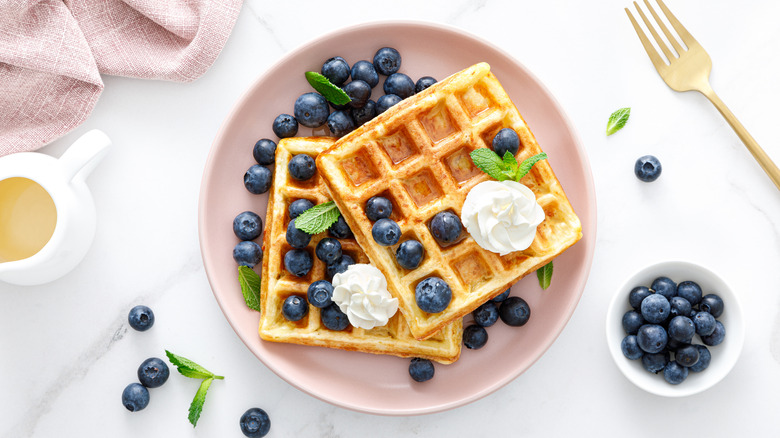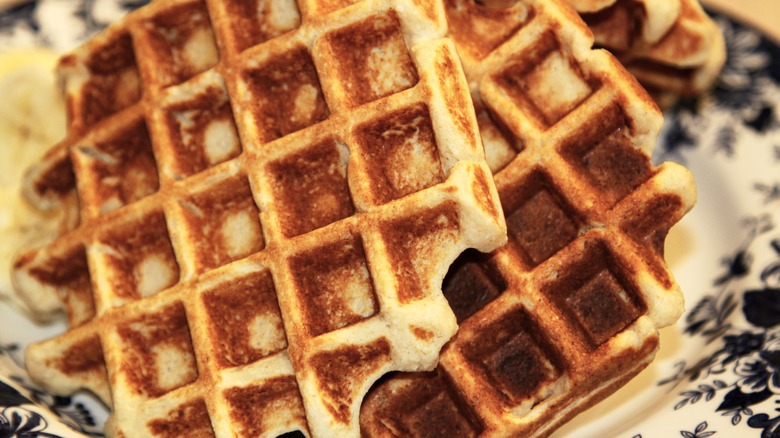How The Ancient Greeks Used Waffle Irons
Plenty of modern inventions and concepts have roots in ancient cultures all across the globe. Ancient Greece is just one such culture. The alarm clock on your bedside dresser or on your phone has roots in Greek engineering, with "water clocks" using a sophisticated series of gongs or water vessels to measure time and wake a person up (via Ancient Pages). Moviegoers and theater critics wouldn't be able to enjoy certain comedies and tragedies without the ancient Greek playwrights popularizing and refining the craft, either (via World History). Furthermore, patients can rest assured that their doctor is following the Hippocratic Oath, a code of medical ethics and standards named after the Greek physician Hippocrates (via Harvard Health). Indeed, the Greeks played a great role in influencing modern culture.
Aside from their impact on the world today, these Greek inventions also showcase that, even millennia ago, mankind still had its fair share of common, everyday interests and concerns. The ancient Greeks had schedules for school and work, enjoyed a variety of entertainment, had money problems, told jokes with friends, and sought to better their lives. The Greeks also enjoyed a good waffle every now and then, albeit one that looks a bit different than the usual box of Eggo Waffles in your freezer. Still, they might've cooked them on their own form of waffle iron.
Waffles originated in Ancient Greece
While the image of Socrates warming up the old waffle iron to cook up some breakfast before the big philosophers' debate is a funny thought, it may not have been too far off from real Greek history. The ancient Greeks enjoyed an occasional waffle, but the style and manner of how they prepared them was a far cry from today's toasters and waffle makers.
According to TIME, the first waffles can be credited to the Athenians, who prepared what was known as "obelios." These were a sort of cake that was cooked between two metal plates in the same way you would make a waffle in a waffle iron. Unlike the modern-day waffle, however, they were flat and smooth, rather than rigged and dotted with tiny squares like we know today. The practice of making these obelios was soon adopted by the Catholic Church (via Mental Floss), which began to decorate the flat surfaces of the waffles with religious scenes and imagery.
These flat cakes were similar to communion wafers, although the "oubiles" — as the obelios were now called — would later be used as edible canvases by artisans as time went on. Eventually, as more ingredients such as honey, butter, and cream became common in Europe, these thin wafer-like oubilies soon evolved into delicacies known as "wafels."
While these early waffles were far different from Belgian waffles, they're an ancestor of this now-classic breakfast food nonetheless. History proves once again that all good foods have a long, well, history!

